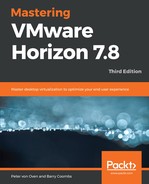ThinApp encapsulates applications into a package consisting of a single .exe or .msi file and abstracts them from the following:
- The host operating system
- Any traditionally installed applications already running on the system
- All other virtual applications running on the system
Applications then run in their own isolated virtual environment, with minimal or zero impact on the underlying operating system, virtual filesystem, or virtual registry.
When you create a ThinApp package, you are basically capturing all the application files, registry settings, and filesystem changes that an application requires for it to run. It also captures its own agent as part of the process, so the endpoint device requires nothing to be installed.
Once packaged, the application can be deployed (either streamed or installed) on to the virtual desktop machine or even a physical desktop. The only requirement ThinApp packages have to run is an underlining Windows operating system, either physical or virtual. When running, it's important to note that the package makes no changes to the OS of the machine it's running on.
There are no requirements for additional backend infrastructure components, as all your ThinApp-packaged applications are stored in a file share on a file server. This means that you can centrally manage and easily update your packages so that all users will receive the updates the next time they launch the application. The following diagram shows a high-level ThinApp architecture:

To summarize, ThinApp delivers the following:
- Allows Windows applications to be packaged, distributed, and executed as single .exe or .msi files on either physical or virtual desktop machines
- Builds process links, a Virtual OS (VOS) with a compressed embedded filesystem, and registry, in a single file
- Requires no pre-installed software on the end user machine.
- Provides a zero footprint on the underlying OS
- Necessitates no traditional installation or changes to the local OS registry or filesystem
- Requires no backend server infrastructure, other than a file share to store your ThinApp packages
To learn more about ThinApp and how to use it in your environment, read VMware ThinApp 4.7 Essentials, by Peter Bjork, Packt Publishing.
